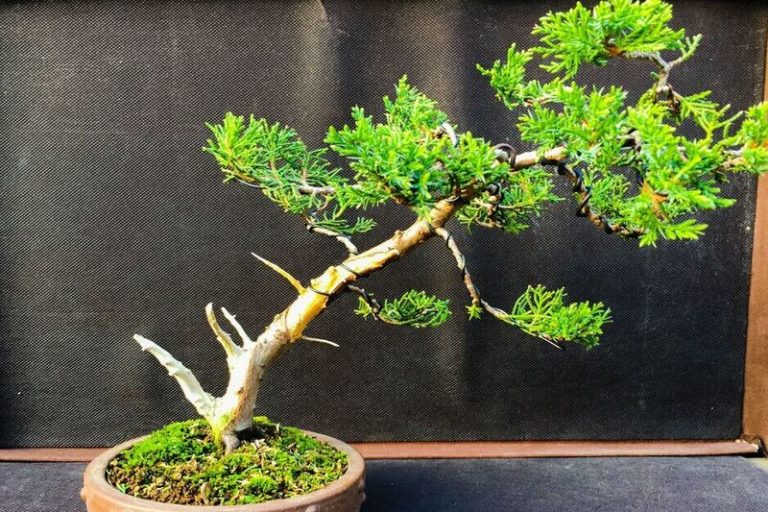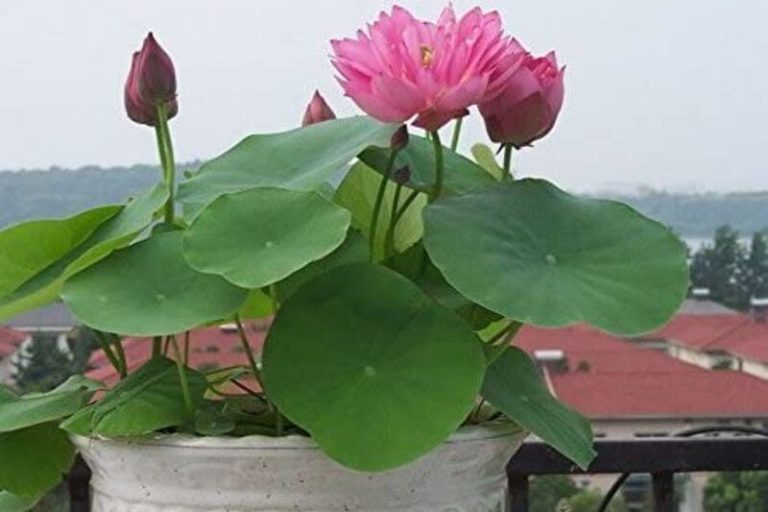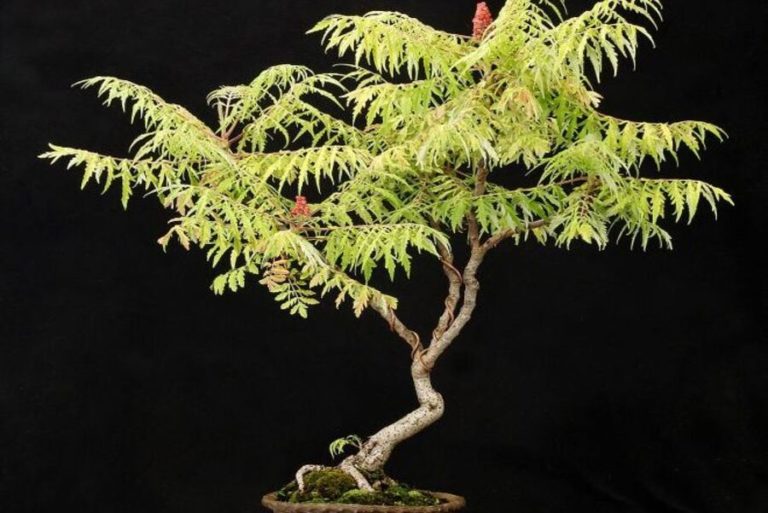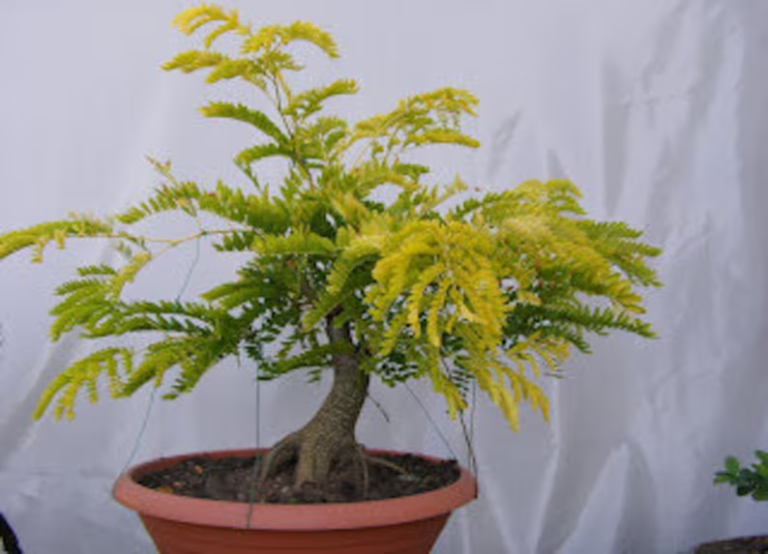Weeping Pussy Willow Bonsai: An Elegant Addition to Your Bonsai Collection
Bonsai trees are living works of art. They bring the majesty of nature directly into your home, and the Weeping Pussy Willow Bonsai is one of the most charming varieties. Have no concern if you are new to the realm of bonsai gardening! This article will assist you in selecting, sowing, and caring for your own Weeping Pussy Willow Bonsai in the simplest manner possible.
What is a Weeping Pussy Willow Bonsai?
A Weeping Pussy Willow Bonsai is a miniature version of the Weeping Pussy Willow tree, scientifically known as Salix caprea ‘Pendula’. It’s a unique and captivating variety of bonsai tree. Weeping Pussy Willow trees are deciduous shrubs or small trees that are native to Europe and Western Asia. They are renowned for their graceful, drooping branches and soft, fuzzy catkins, which resemble a cat’s paw, giving the tree its intriguing name.
History and Origins of the Weeping Pussy Willow Bonsai
The Weeping Pussy Willow Bonsai, like other bonsai variations, has its origins in ancient China and Japan. Bonsai as an art form began over a thousand years ago, most likely in China, when small trees were cultivated in pots. The tradition subsequently moved to Japan, where it matured into the sophisticated art form that we know today.
The particular history of the Weeping Pussy Willow Bonsai variation is not well recorded, although it most likely arose as a consequence of horticulture aficionados selecting and nurturing Weeping Pussy Willow trees for their distinctive qualities.
The practice of miniaturizing these trees via meticulous pruning and training procedures is consistent with the larger heritage of bonsai culture.
Because of their aesthetic appeal and elegant shapes, several tree species, like the Weeping Pussy Willow, became popular options for bonsai aficionados as interest in bonsai increased internationally.
Today, the Weeping Pussy Willow Bonsai is a popular variety among bonsai gardeners, valued for its beauty and unusual appearance in the world of small trees.
Weeping Pussy Willow Bonsai and Their Symbolism
The Weeping Pussy Willow Bonsai, like other bonsai trees, has culturally significant symbolism. Despite the fact that the precise symbolism of Weeping Pussy Willow Bonsai can differ, the following are a few common interpretations:
1. Tranquility and Serenity: The Weeping Pussy Willow has graceful, trailing branches. Bonsai evoke feelings of peace and tranquility. Its serene appearance serves as a reminder to find serenity despite life’s challenges.
2. Resilience: Bonsai trees, including the Weeping Pussy willow, represent resilience and perseverance. Bonsai trees undergo stringent pruning and training despite their small size, symbolizing the ability to surmount adversity and emerge stronger.
3. Connection with Nature: In general, bonsai trees represent the harmony between nature and human endeavor. The Weeping Pussy Willow Bonsai exemplifies this connection with its natural elegance, accentuating the beauty of the natural world within a confined space.
4. Patience and Longevity: Bonsai is an art form that requires perseverance and devotion. The Weeping Pussy Willow Bonsai’s sluggish growth symbolizes patience and the benefits of long-term care. It serves as a reminder of the importance of perseverance and the endurance of nature.
5. Renewal and Growth: The Weeping Pussy Willow is a deciduous tree, shedding its foliage in the autumn and producing new ones in the spring. This cycle represents renewal, development, and life’s constant transformations.
6. Beauty in Imperfection: Bonsai, such as the Weeping Pussy Willow variation, frequently embrace the Wabi-Sabi philosophy, which finds beauty in imperfection and transience. Each bend and curve of the tree’s branches tells a unique tale, highlighting the imperfections that make it distinctive.
Gifting a Weeping Pussy Willow Bonsai can signify wishes for tranquility, fortitude, and personal development in various contexts. Moreover, the art of caring for a bonsai tree is considered meditative, fostering mindfulness and a deeper connection to nature.

Characteristics of the Weeping Pussy Willow Bonsai
The Weeping Pussy Willow (Salix caprea ‘Pendula’) is a favorite among bonsai devotees due to its graceful, pendulous branches and attractive foliage. Here are several characteristics and factors to consider when cultivating a Weeping Pussy Willow bonsai:
1. Pendulous Growth: The most distinctive feature of this bonsai is its weeping or cascading growth habit. The branches hang down gracefully, creating a unique and attractive appearance.
2. Leaves: Weeping Pussy Willow bonsai has elongated, narrow, and lance-shaped leaves that are typically a pale green color. The leaves can be finely serrated along the edges.
3. Catkin Flowers: The Weeping Pussy Willow Bonsai has soft catkin flowers in the spring, which make it look even more beautiful. These catkins, which look like cat paws, are soft and usually a pale gray color. They make the tree look better.
4. Bark and Trunk: The bark of the Weeping Pussy Willow Bonsai is typically smooth and grayish-brown. The trunk, when mature, develops an interesting texture and character, reflecting the age and resilience of the tree.
5. Deciduous Nature: Like its full-sized counterpart, the Weeping Pussy Willow Bonsai is deciduous. It sheds its leaves in the fall, showcasing its bare branches during the winter months. This seasonal change adds to the tree’s dynamic beauty and the artistry of bonsai cultivation.
6. Size and Scale: When cultivated as a bonsai, the Weeping Pussy Willow is kept small, making it suitable for indoor or outdoor bonsai gardens. Its reduced size allows enthusiasts to appreciate its beauty on a smaller scale while still enjoying the tree’s unique characteristics.
7. Adaptability: Weeping Pussy Willow Bonsai is relatively adaptable and can thrive in various climates. With proper care, it can be cultivated both indoors and outdoors, allowing bonsai enthusiasts in different environments to enjoy this beautiful tree.
8. Symbolic Presence: Beyond its physical traits, the Weeping Pussy Willow Bonsai carries symbolic significance, representing tranquility, resilience, and the beauty of nature within the confined space of a bonsai pot.
These characteristics collectively make the Weeping Pussy Willow Bonsai a favorite choice for bonsai artists, adding a touch of elegance and grace to any bonsai collection.

Weeping Pussy Willow Bonsai and Their Symbolism
The Weeping Pussy Willow Bonsai has a unique look and a calm beauty that holds important meanings in many cultures and situations:
1. Tranquility and Calmness: The Weeping Pussy Willow Bonsai’s gracefully falling branches stand for peace and calmness. Because of its soft, flowing shape, which stands for peace, it is often used in meditation areas and other places meant to help people relax.
2. Resilience and Strength: Bonsai trees, such as the Weeping Pussy Willow, represent resilience and vigor. Despite being small and delicate, bonsai endure rigorous pruning and training, embodying the ability to withstand challenges and adversity.
3. Harmony and Balance: The bonsai Weeping Pussy Willow’s symmetrical and harmonious structure symbolizes the interconnectedness of all living beings. Its cultivation exemplifies the harmony between human intent and natural beauty, highlighting the equilibrium of life.
4. Patience and Endurance: Bonsai cultivation requires considerable determination and persistence. The Weeping Pussy Willow Bonsai’s lethargic growth serves as a reminder of the significance of perseverance and the benefits of sustained, long-term effort.
5. Impermanence and Appreciation of Beauty: The Weeping Pussy Willow bonsai represents the Japanese philosophy of Wabi-Sabi, which finds beauty in imperfection and transience. Each twist and turn in the branches tells a unique narrative, commemorating the beauty found in the passage of time.
6. Renewal and Growth: As a deciduous tree, the Weeping Pussy Willow Bonsai experiences cycles of growth, shedding foliage in the autumn and regenerating in the spring. This represents rebirth, development, and the unbroken cycle of life.
7. Connection with Nature: Bonsai trees, including the Weeping Pussy Willow, serve as a tangible connection to nature within indoor spaces. They elicit an appreciation for the natural world by reminding us of our origins in the natural world.
8. Gift of Blessings:
In some cultures, presenting a Weeping Pussy Willow Bonsai as a gift is regarded as an act of benevolence. It is believed to bring the recipient blessings of harmony, prosperity, and longevity, making it a considerate and meaningful gift.
The Weeping Pussy Willow Bonsai represents a harmonious combination of natural beauty, human creativity, and profound symbolism. Its presence functions as a reminder of humanity’s enduring relationship with the natural world.
How to Grow Weeping Pussy Willow Bonsai?
Growing a Weeping Pussy Willow Bonsai requires careful attention to its specific needs. Here’s a step-by-step guide to help you cultivate a healthy and beautiful bonsai:
Purchase a Healthy Specimen: Choose a healthy Weeping Pussy Willow tree from a reputable nursery or bonsai supplier. Look for a plant with a sturdy trunk, well-spaced branches, and vibrant leaves.
Select the Right Pot and Soil: Use a well-draining bonsai pot with drainage holes to prevent waterlogged roots. Opt for a well-draining bonsai soil mix or create your own by combining akadama, pumice, and lava rock in equal parts.
Repotting and Root Pruning: In early spring, repot your Weeping Pussy Willow bonsai every two to three years. Remove from the roots, with moderation, any that are circling or dense. Reduce the root mass by no more than one-third in order to prevent the plant from being overly stressed.
Positioning and Sunlight: Position your bonsai so that it is exposed to indirect, brilliant sunlight for the majority of the day. Ideal is a location that receives morning sunlight and afternoon cover. To prevent leaf scorch, shield the bonsai from the intense midday sun, particularly in warm climates.
Watering: Maintain consistent moisture in the soil without allowing it to become inundated. Apply copious amounts of water when the uppermost inch of soil becomes dried. Do not submerge the bonsai in a saucer of water; doing so may result in the development of root infection. A gentle spray nozzle or a watering can should be used to water the tree equitably.
Fertilization: Fertilize your Weeping Pussy Willow bonsai every two to four weeks with a balanced liquid fertilizer during the growing season (spring to early autumn). When the tree is in dormancy during the winter, reduce or cease fertilization.
Pruning and Shaping: Consistently prune your bonsai in order to preserve its form. New growth should be pruned back to promote branching and density. Employ bonsai wire to manipulate the branches delicately throughout the growth phase. Caution should be exercised when wiring so as to prevent damage to the branches.
Pest and Disease Control: Frequently encountered bonsai parasites include spider mites, aphids, and scale insects. Immediately apply neem oil or insecticidal detergent to infestations. Ensure that the tree is well-ventilated to avert fungal diseases.
Winter Care: During the winter, safeguard your Weeping Pussy Willow bonsai from subzero temperatures. To protect it from frost, position it in a frigid, unheated garage or cover it with frost cloth. Use water sparingly while dormant in the winter.
Patience and Observation: The craft of bonsai cultivation requires perseverance. Observe your Weeping Pussy Willow bonsai attentively, attend to its needs, and take pleasure in its gradual transformation as time passes.
By following these guidelines and showing patience and care, you can grow a healthy and stunning Weeping Pussy Willow Bonsai. Remember that each bonsai is unique, and understanding its individual requirements is key to successful cultivation.
Displaying and Showcasing the Weeping Pussy Willow Bonsai
Displaying and showcasing a Weeping Pussy Willow Bonsai can turn it into a captivating focal point in your home or garden. Here are some creative ideas to highlight the beauty of your bonsai:
- Bonsai Stand or Table: Place your Weeping Pussy Willow Bonsai on a bonsai stand or a decorative table. This elevates the bonsai, drawing attention to its graceful branches and enhancing its overall presence.
- Indoor Display: If you’re keeping the bonsai indoors, consider placing it near a large window where it can receive filtered sunlight. Choose a decorative pot that complements your interior decor. Rotate the bonsai regularly to ensure all sides receive adequate light.
- Outdoor Garden: In an outdoor setting, position the bonsai on a patio, deck, or garden pedestal. Create a dedicated bonsai garden area with small decorative stones, bonsai benches, and other bonsai trees for a harmonious display.
- Bonsai Grouping: Display your Weeping Pussy Willow Bonsai alongside other bonsai trees. Grouping bonsai trees of different varieties and sizes creates a visually appealing miniature forest, showcasing the diversity of bonsai cultivation.
- Seasonal Themes: Decorate your bonsai according to the seasons. For example, during spring, surround the bonsai with blooming flowers. In the fall, place it amidst colorful foliage. This thematic approach enhances the bonsai’s charm and adapts its display to the changing seasons.
- Accent Lighting: Illuminate your Weeping Pussy Willow Bonsai with subtle accent lighting in the evening. Soft, warm lighting can create a magical ambiance, emphasizing the bonsai’s elegance and casting beautiful shadows.
- Display Pedestal: Elevate your bonsai on a specially designed display pedestal made of wood, stone, or metal. This not only adds height but also provides a sense of importance to the bonsai, making it a focal point in your garden or home.
- Bonsai Exhibition: Participate in bonsai exhibitions or shows to showcase your Weeping Pussy Willow Bonsai to a wider audience. These events allow you to display your bonsai alongside other enthusiasts’ creations, fostering a sense of community and learning.
- Seasonal Variations: Change the display elements, such as accent plants, figurines, or decorative stones, according to the seasons. This dynamic approach keeps the display fresh and engaging throughout the year.
- Regular Maintenance: Keep the display area clean and well-maintained. Prune and shape the bonsai regularly to maintain its form and ensure it remains the focal point of the display.
Remember, the key to a captivating display lies not only in the bonsai itself but also in the thoughtful arrangement and creativity you put into showcasing its beauty. Experiment with different ideas and find a style that resonates with your personal taste and the aesthetics of your space.
How to Care for and Maintain a Weeping Pussy Willow Bonsai
Caring for and maintaining a Weeping Pussy Willow bonsai requires attention to various factors to ensure the health and aesthetic appeal of the tree. Here are some care and maintenance guidelines for your Weeping Pussy Willow bonsai:
- Light and Location:
- Place your Weeping Pussy Willow bonsai in a location that receives at least 4-6 hours of direct sunlight daily, preferably in a sunny or partially shaded area.
- Watering:
- Keep the soil consistently moist but not waterlogged. Water when the top inch of soil feels dry.
- Use a well-draining bonsai soil mix to prevent water retention and root rot.
- Pruning and Shaping:
- Regularly prune your bonsai to maintain its weeping shape and to remove any dead or unhealthy branches.
- Use sharp and clean bonsai pruning shears to make precise cuts.
- Wiring can be used to shape branches, but be gentle to avoid damaging the tree.
- Fertilization:
- Feed your Weeping Pussy Willow bonsai with a balanced, slow-release bonsai fertilizer during the growing season (spring through early autumn). Follow the manufacturer’s instructions for application.
- Repotting:
- Repot your bonsai every 2-3 years, typically in early spring before new growth starts.
- Gently trim and comb out the roots during repotting, and use fresh bonsai soil to ensure good drainage and nutrient availability.
- Winter Care:
- Weeping Pussy Willow bonsai are hardy and can withstand cold temperatures. However, if you live in an extremely cold climate, provide some winter protection:
- Place the bonsai in a sheltered area to shield it from strong winds.
- Mulch the soil surface to insulate the roots from freezing temperatures.
- Water sparingly during the winter months, allowing the soil to dry slightly between waterings.
- Weeping Pussy Willow bonsai are hardy and can withstand cold temperatures. However, if you live in an extremely cold climate, provide some winter protection:
- Pest and Disease Control:
- Keep an eye out for common pests such as aphids, scale insects, and caterpillars. Inspect your bonsai regularly for signs of infestation and treat accordingly.
- Address any fungal or bacterial diseases promptly by pruning affected areas and using appropriate fungicides or bactericides.
- Wiring and Training:
- Use training wires to guide branches into the desired position. Be careful not to wrap wires too tightly to avoid damaging the bark.
- Monitor the wiring to prevent it from cutting into the branches, and remove wires as soon as they have served their purpose.
- Styling and Aesthetics:
- Consider the artistic aspects of your bonsai, including branch placement, foliage density, and overall balance. Regularly assess and refine the aesthetic aspects of your tree.
- Patience:
- Growing and maintaining a Weeping Pussy Willow bonsai is a long-term commitment. It can take years to achieve the desired shape and size, so be patient and enjoy the process.
Remember that each bonsai is unique, and you should adapt your care routine to your specific tree’s needs. Regular observation and adjustments are key to keeping your Weeping Pussy Willow bonsai healthy and beautifully weeping.
Weeping Pussy Willow Bonsai Care Sheet
| Aspect | Care Tips |
|---|---|
| Watering | Keep the soil consistently moist but not waterlogged. Water when the top inch of soil is dry. |
| Sunlight | Place in a sunny or partially shaded area with 4-6 hours of direct sunlight daily. |
| Temperature | Hardy, but protect from extreme cold if necessary. |
| Humidity | Maintain moderate humidity levels, use a humidity tray if needed. |
| Fertilization | Use a balanced, slow-release bonsai fertilizer during the growing season. Follow instructions. |
| Pruning and Trimming | Regularly prune to maintain the weeping shape and remove dead or unhealthy branches. |
| Wiring and Styling | Use wiring to shape branches, but be gentle to avoid damage. Monitor and remove wires as needed. |
| Repotting | Repot every 2-3 years in early spring using fresh, well-draining bonsai soil. |
| Pest and Disease Control | Inspect for pests regularly. Address infestations promptly with appropriate treatments. |
| Winter Care | Provide protection in extremely cold climates: shelter, mulch, and reduce watering. |
| Regular Maintenance | Continuously assess and refine the aesthetics of your bonsai. Be patient with long-term growth. |
The table above can help you quickly remember how to take care of your Weeping Pussy Willow Bonsai. Care for your tree in a way that meets its needs, and make changes as needed based on the weather where you live and how the tree grows.
FAQ
1. What is a Weeping Pussy Willow Bonsai?
- A Weeping Pussy Willow Bonsai is a miniature version of the Weeping Pussy Willow tree (Salix caprea ‘Pendula’). It is carefully cultivated and shaped into a bonsai form, featuring elegant cascading branches and attractive foliage.
2. How do I care for a Weeping Pussy Willow Bonsai?
- Care involves providing the right balance of sunlight, water, nutrients, and regular maintenance. See the care sheet for detailed instructions.
3. Can I keep my Weeping Pussy Willow Bonsai indoors?
- While they can be temporarily placed indoors, Weeping Pussy Willow Bonsai thrive outdoors due to their need for direct sunlight and seasonal temperature changes. Indoor conditions may not provide the optimal environment for long-term growth.
4. When should I repot my Weeping Pussy Willow Bonsai?
- Repot every 2-3 years in early spring, just before new growth starts. This helps refresh the soil and maintain the health of the bonsai.
5. What pests and diseases should I watch for in my bonsai?
- Common pests include aphids, scale insects, and caterpillars. Monitor your bonsai for signs of infestation. Fungal and bacterial diseases can also occur, so promptly address any issues with appropriate treatments.
6. Can I wire my Weeping Pussy Willow Bonsai to shape it?
- Yes, you can use training wires to shape the branches. However, be careful not to wrap wires too tightly to avoid damaging the bark. Monitor the wiring to prevent it from cutting into the branches, and remove wires as soon as they’ve served their purpose.
7. How long does it take to develop a fully mature Weeping Pussy Willow Bonsai?
- Developing a fully mature bonsai can take many years, often a decade or more. Bonsai cultivation is a patient and ongoing process, and the tree will continue to evolve over time.
8. What should I do if my Weeping Pussy Willow Bonsai loses leaves or appears unhealthy?
- If your bonsai loses leaves or looks unhealthy, review its care routine to ensure it’s getting the right amount of water, sunlight, and nutrients. Prune dead or diseased branches, and address any pest or disease issues promptly.
9. Can I grow my Weeping Pussy Willow Bonsai from seeds or cuttings?
- While it is possible to propagate Weeping Pussy Willow from seeds or cuttings, starting from a well-established nursery plant is generally more reliable and faster for creating a bonsai.
10. Are Weeping Pussy Willow Bonsai cold-hardy?
- Weeping Pussy Willow Bonsai are generally hardy and can tolerate cold temperatures. However, it’s advisable to provide some winter protection in extremely cold climates, including shelter from strong winds and mulching to insulate the roots.
Also Read:








